Blog layout
Living in Russia, Serbia or Poland Comparative
Living in Russia VS Living in Serbia, Minus and Plus
I Lived 10 Months in Russia under the Temporary Asylum, i can tell you know my Feedback about Living in Russia Vs Living in Serbia.
In this Article i will write you the Advantages and Desadvantages of Living in Russia and Serbia.
In this Article i will Write a rating on 10 regarding the Living in both of this 3 Countries, from my Personal experience as Journalist that lived in both of this countries for Several Months.
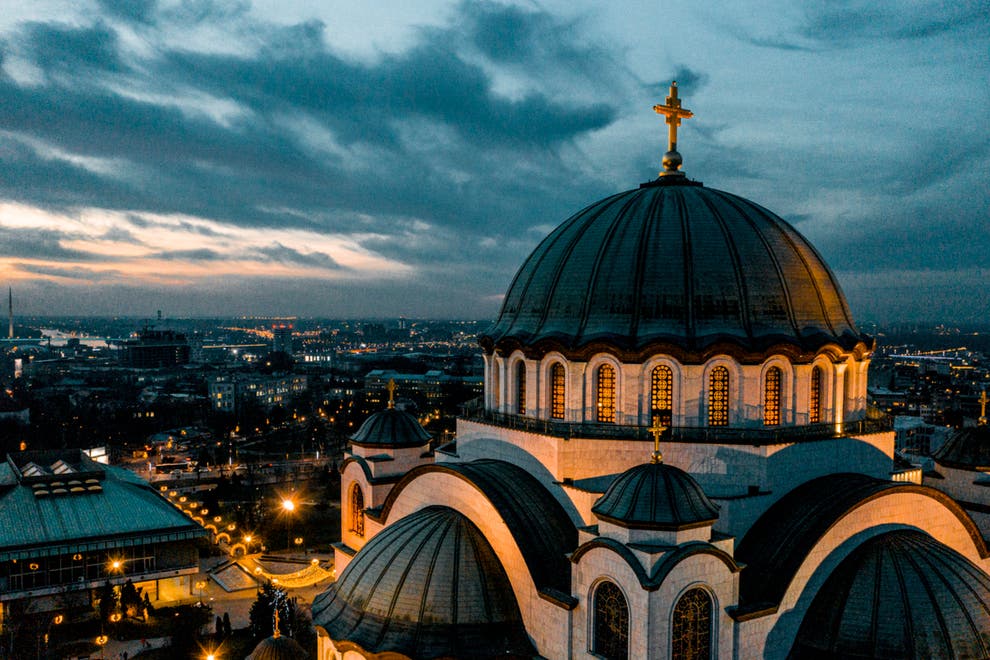
The First Country to be Analyzed will be Serbia :
I will tell you my Experience of Living in Novi Sad, Subotica and avoid to talk about Belgrade (not a good place to live)
LIVING COST for 1 person : 700-900 EUR per Month all included
Cost of 1 hotel Night : From 10 EUR to 30 EUR (Middle Prices for 2 stars hotel)
Easy Settlement with the White Card Registration from the Police, Europeans can stay up to 6 months per Year without a Permit.
In Serbia usually People's are Friendly and usually help foreigners, a small part of Serbian People's Know English. The Streets are clean in the Vojvodina (Northern Part of Serbia), This Country is not very well known but it must be more Popular due to higher quality of Life of others European Countries.
In Serbia you can easily setup a Business and get a Temporary 1 to 3 years Residency that can be either prolong by the Police.
The Process to Setup a Serbian D.O.O (limited liability company) is Easy and fast, all cost around 200EUR included Notary translation of the Company Charter.
You also can buy a House from 10 000EUR to 30 000EUR In the Northern Part of Serbia that qualify you for Residency for a Year with Possibility of Prolongation and White Card Permanent Police Registration.
RATING FOR THE LIVING IN SERBIA (Vojvodina) : 9/10 (according to personal experience, and internet data compilation)
Living for Long Term without a Permit is Possible with a White Card Permanent Registration and Several European ID or Passports to Cross the border each 3 months, if not the duration of stay 3 months each 6 months.
LIVING IN BELGRADE : 6,9/10 (according my personal experience) due to high costs for accomodation, transport, food and security problems.
Living long term in Belgrade could be difficult for Middle Class European People's
--------------------------------------------------------------------------------------------------------------------------------------------------------

The Second Country to be Analyzed will be Russia :
I will tell you my Experience of Living in Kaliningrad, Moscow, St Petersburg and avoid to talk about others cities (not a good place to live for long term)
LIVING COST for 1 person in Kaliningrad / St Petersburg : 500-800 EUR per Month all included
LIVING COST for 1 person in Moscow : 1000 EUR minimum (30% more expensives than the others main cities)
Cost of 1 hotel Night : From 10EUR to 20EUR (MIddle Prices for 2 stars hotel)
Difficult and Limited Time Settlement with the Migration Card Registration from the Hotel and Flat Owner, or MVD if you own property, Europeans can stay up to the term of their Visa or their Residence Permit, or Asylum Permit or Working Time.
In Russia usually People's are Friendly and usually help foreigners (Kaliningrad and St Petersburg), a small part of Russian People's Know English. The Streets are usually clean, This Country is not very well known, it is not difficult to get a Visa for Tourism but others Visa are difficult to obtain usually, Residency Permt even if you qualify for is also difficult to Obtain after Covid19 Due to Bureaucratic Situation.
In Russia you can setup a Business and get a Temporary permit for 3 years that can be Prolong for a VNG Passport after 8 Months.
The Process to Setup a Russian OOO (limited liability company) is Easy and fast, all cost around 200EUR included Preparation of documents by the agency and NALOG Fees.
You also can buy a House from 5 000EUR to 30 000EUR In Many Small Russian Towns but it doesn't qualify you for Residency. Work in Russia Qualify you for Residency.
RATING FOR THE LIVING IN RUSSIA
Saint Petersburg : 3/10 (according to a personal experience, and internet data compilation), This Rating is Due to Very difficult situation with administration in this City FMS, Police, Courts... and High Corruption Level.
Kaliningrad : 7,7/10 (according to a 8 months personal experience, and internet data compilation)
Living for Long Term without a Permit is NOT POSSIBLE except if you Work in Russia under the law 115, due to the situation with Registration it is necessary to rent a flat or house for long term and get registration or Buy a Property and get a Registration, Regisration is done in MVD or MFC (Service center), The procedure is not difficult but you must be legally Staying in Russia to be registered.
LIVING IN MOSCOW : 7/10 (according my personal experience) due to high costs for accomodation, transport, food and traffic.
Living long term there could be difficult without a owned accomodation for Middle Class European People's
LIVING IN RUSSIA (Others Regional Towns) : 4/10 (according my personal experience) due to transport problems, lack of infrastructures, security problems sometimes, broken roads and lack of cleaning.
From my experience after living in Tcheboksary and Smolensk
---------------------------------------------------------------------------------------------------------------------------------------------------------
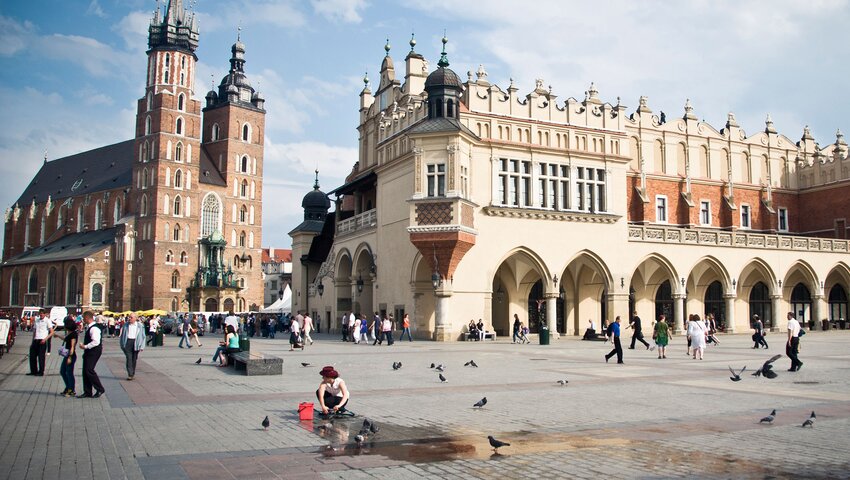
The Third Country to be Analyzed will be Poland:
I will tell you my Experience of Living in Krakow and Warsaw and avoid to talk about others cities as i don't know enouth
LIVING COST for 1 person in Warsaw / Krakow : 900 -1200 EUR per Month all included
LIVING COST for 1 person in Smaller Citiies (Przemysl) : 700 EUR minimum
Cost of 1 hotel Night : From 15EUR to 35EUR (MIddle Prices for 2 stars hotel)
Easy Settlement with the Vovoidship Office if you own an accomodation or have a renting contract, Europeans can stay as much they want without a Residence Permit.
In Poland usually People's are Friendly and usually help foreigners, a small part of Polish People's Know English. The Streets are usually clean, This Country is not very well known, it is not difficult to get a Visa for foreigners from Outside Europe but others Visa are difficult to obtain usually, Residency Permt even if you qualify for is also difficult to Obtain after Covid19 Due to Bureaucratic Situation.
In Poland you can setup a Business with the KRS, for Non European Persons it help to get a Temporary Residence Permit.
The Process to Setup a Polish S.P Z.O.O (limited liability company) is Easy and but costly, all cost around 1000EUR included Preparation of documents by the agency, KRS Fees and others fees as Notarius fees.
You also can buy a House from 15 000EUR to 30 000EUR In Many Small Russian Towns but it doesn't qualify you for Residency
RATING FOR THE LIVING IN POLAND (Krakow, Warsaw) : 7,7/10 (according to personal experience, and internet data compilation)
Living for Long Term without a Permit is POSSIBLE for Europeans.
LIVING IN REGIONAL TOWNS : 6/10 (according my personal experience) due to Distance, lack and infrastructures and low salary's.
Living long term there could be difficult without a owned accomodation for Middle Class European People's
 FINAL REVIEW : SERBIA Number 1 (in Europe)
FINAL REVIEW : SERBIA Number 1 (in Europe)
From my Personal Experience and data compilation i would Recommand you to Choose the Northern Part of Serbia to establish your European Residence, due to advantages of Visa Free Regime, White easy registration with Police, low prices and accomodation cost and a lot of Houses for Sell for an afffordable Price, under the European Price for accomodation.
+ Easy Settlement with a Police Registration
+ Not NATO, Not EU Member, Neutral Political Situation
+ Cheap Real Estate
+ Low Living Cost
+ In the center of Europe, Easy access to the European Union
+ Clean Cities
+ Developped Infrastructures and cheap transport
+ Possibility to Obtain easily a Temporary Residence Permit
Christine Razanamahasoa the Strongest Women in Antananarivo

Picture of Christine Razanamahasoa in her Green Chair
Today on the Special Series regarding the Malagasy Politics i would like to Draft the unique Portrait of Christine Razanamahasoa the Greatest and Strongest Women on the Red Island. This Women was the Head of the Malagasy Parliament during Many Years.
Mrs Christine Razanamahasoa Served as Minister of Justice during many years from 2009 to 2013.
She is a Lawyer and worked during the transition in 2014 and from 2019 as President of the National Assembly in Madagascar. She is one of the Srongest and Respected Women on the Red Island, with anti corruption skills and respect of the Malagasy laws and constitution.
She was one that goes against Andry Rajoelina and supported the 10 others candidates due to Rajoelina dual citizenship that prohibited by law to go for a New Presidential election in Madagascar.
In 2023 the Parliament Group IRD tried to remove from office Christine Razanamahasoa to let her without a Political Influence, this Group is the Group of the President Andry Rajoelina.
She were excluded from the Political Party of Andry Rajoelina : TGV in 2023, Regarding the point of View of RedNovosti as an independant online newspaper, we think that Mrs Christine Razanamahasoa tried to act in the interest of Madagascar and fight against corruption and respect of the Malagasy Laws and Constitution during all her Politician work.
From DJ to President, the rare destiny of Andry Rajoelina
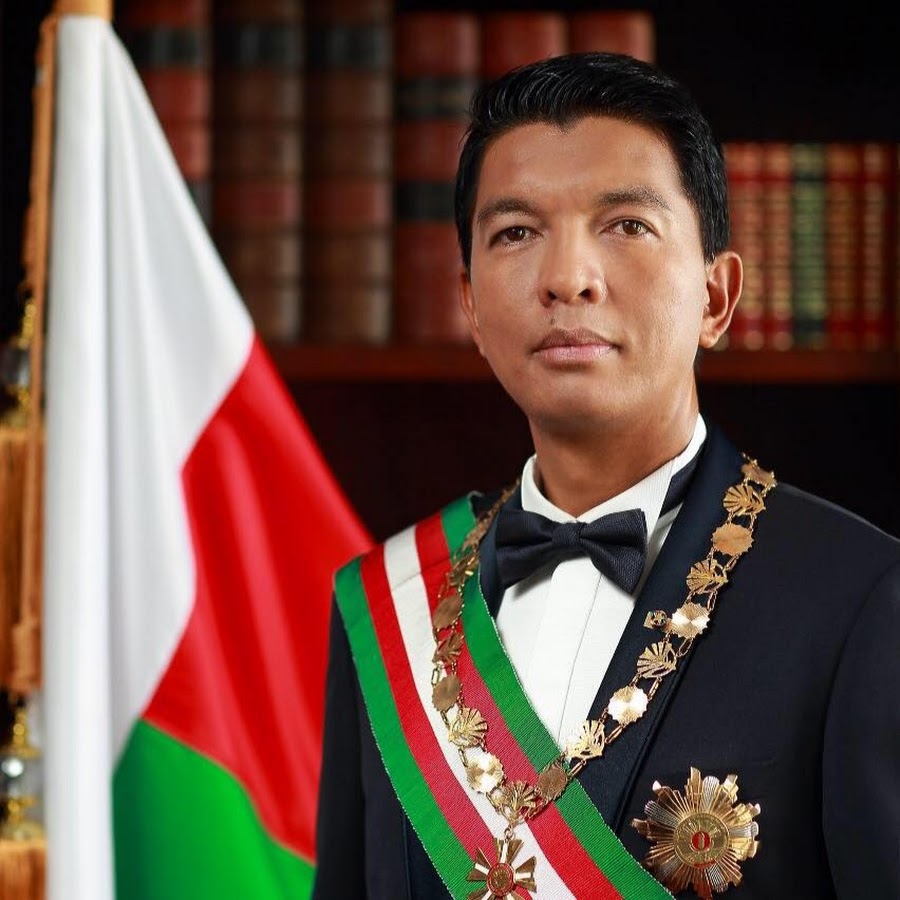
Andry Rajoelina is a Self Made Men, from DJ he becomes the Malagasy President in 2009 after a Coup against is "Rival" the Famous and Very popular President Ravalomana, he was supported by a part of the Malagasy Population in this.
Andry Rajoelina and President Ravalomanana had some rivality for personal reasons that concern only them, we will not write in this article the reasons of their rivality or misunderstanding.
We will not describe the Coup , such informations and coup reasons can be found on Wikipedia.
Andry Rajoelina and his Staff tried to develop the Malagasy economy since 2009, and during the transition also Andry Rajoelina was again reelected President of the Red Island in 2023 depsite boycott request from the 10 White Opponents due to the allegated Violation of the Malagasy Law by Andry with his dual nationality French, Malagasy.
Andry Rajoelina has very close ties with the Frenh Repubclic Many since years, he has according to open source a House in France, Neuilly sur Seine and his Childs studied and Reside in France.
Good COVID19 Management by Andry Rajoelina (world innovative leader)
Andry got the request to Vacinate the Malagasy from the UN but received only a miimum dose under a quota but the Majority of the population refused this Vaccination and prefered the Covid Organics Natural Drink of the Malagasy President.
This Drink was export under his governance for Free to many African Countrie's to fight agains the Covid19 in a natural, non risky solution.
Sources told it was Successuly export to Tanzania, Haiti, LIberia, Guinea... Negociations with Russia were set but no sources confirmed the export to Russia.
As one of the leader in the world that innovated and setup a Covid19 Drink to save the life of the Malagasy's, he were against vaccination of Malagasy's, Madagascar received from the UN the doses under a UN quota compulsory agreement.

Covid19 Unique Creation of Malagasy President to Fight the Covid19 Without Medication
2023 new electoral success (depsite boycott request)
In 2023 Andry Rajoelina was successuly again reelected for a second term the President of the Red Island depsite request to Boycott this elections by 10 of his Rivals.
His program is to continue to develop Madagascar and it's economy, modernize infrastructures, attract tourists and foreign investments, reduce the corruption.
We wish a Good Success to Andry and his Staff for his 2nde and last Presidential term (according to the law)
R.R who is Roland Ratsiraka ? Portrait {Madagascar Politics}
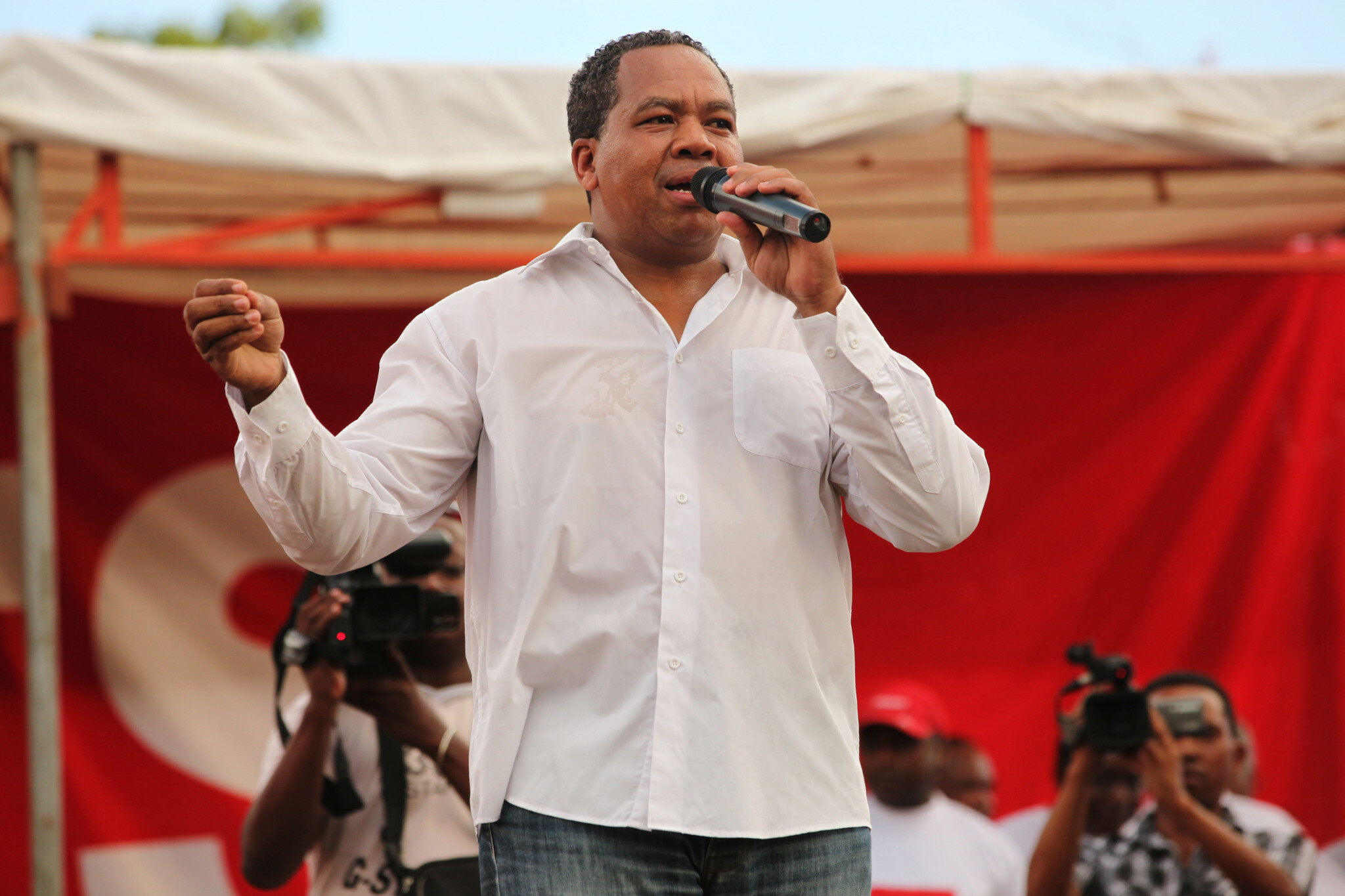
Picture: Roland Ratsiraka Speech
Roland Ratsiraka is a Famous Malagasy Politician and Talented Entrepreneur that Greatly contributed to the Malagasy Economy with his own Company's.
We Present you him as a portential futur President of the the Red Island, he is a Person that act in the interest of the Malagasy People's and try to control the corruption on the Red Island, corruption that have a negative impact on the foreign investments possibility's to develop the Red Island.
Born in Antanarivo in 1966 he is from the Familly of the Famous Previous Malgasy President Didier Ratsiraka, He Founded is own Political Party in Toamasina in 1998, TTS Toamasina Tonga Saina to enter in the Malagasy Politics.
There was some Political Misunderstanding between Ravalomanana and Ratsiraka in 2007 due to the difference in the Malagasy community's, Ravalomanana is from the Merina Community and Merina usually collaborate between people's of their community with few exceptions for special cases or intermediary's, No charge against him was set and he never go to Jail as Ratsiraka and Ravalomanana have a close Political View despite that they are not from the same community.
Marc Ravalomana and Roland Ratsiraka are both very popular among Malagasy Politicians in the Antsiranana Province because they are the Politicians people's for the Malgasy's that protect the Right and Malagasy's understood that this politicians are fighting against corruption and trying to help Malagasy's.
We can consider the chances of Roland Ratsiraka to be President of the Red Island during the next 15 years are high, especially if he got more support to be better knowned from all the Malagasy's with a better Media Coverage in the country and a bigger financial support to his campains to spread his ideas in the Malagasy society and influence the futur of the Country.

10 white Candidates in Tana 2023, contest the election, with support of the Head of Malagasy Parliament
In 2023 he was among one of the 10 candidates that contest the Malagasy Presidential Election, they got also the Powerful support of the President of the National Parliament in Madagascar, Mme Christine Razanamahasoa in their vandications.
He is probably the next one that can save the White Future of the Malagasy's People's in this World.
How I became a World Citizen of "Antarctica"
UPDATED: 21.03.2025
In this article i will shortly describe you how i became a World Citizen of "Antarctica" (for at least 20, 30 years lifetime duration) and for liftime a owner of a UAL Piece of Art with the help of the Artists Lucy + George Orta and the University of the Arts of London.
I found this initiative by Chance, i discover this New Passport by chance on the Internet and what is incredible that this Passport can be used in differents countries, it is not only a piece of Art but it can be used in Several Countries for internal idendification purposes. Currently in Russia it is possible to use this document as an identification document and pay taxes and use it in differents services with this Innovative Passeport.
For Sure it is not an Usual Passport for travelling around the World but Somtimes it can be used for travel in some places with Visa or Without Visa, you can check on ivisa.com website if you need a Visa.
You can Currently order this Passport with the UAL or the ORTA Studio that will deliver to you, it is also possible to get this Passport during their exibitions for 1 symbolic Euro usually.
This Unique Art Passport is edited by the UAL and have a unique Valid ISBN Code.
In Russia you can do a Notary Translation of this document and use it as your second or main ID document.
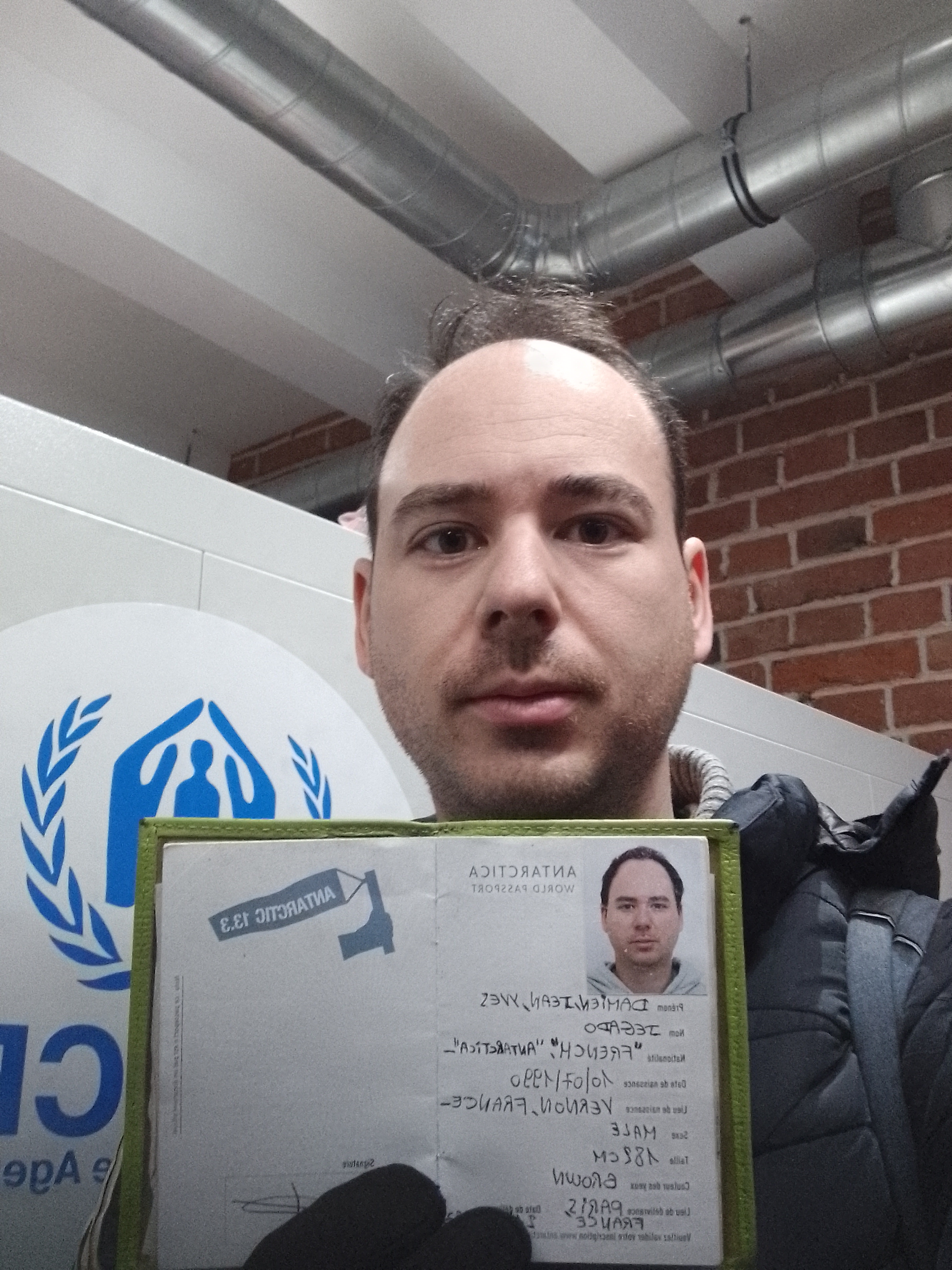 b
b 
Selfie taken in UHCR office in Moscow Center, Russia (ATA 2022 Paris* Edition) Selfie in Yerevan at VBet Office , ATA Passport Berlin-Moscow* Edition 2020 (Yerevan time)
I currently Hold 3 ATA World Passports by UAL/ORTA and associates, French 2022 Paris Edition Number 1066 (French/English Language) Registered in Russia in Pension Fund and others State Services,
The ATA Passport Berlin-Moscow Edition 2020 Number 14678 (Russian Language), Robbed at the Border Georgia/Armenia and way Back to Armenia.
The ATA Passport Morocco, Marrakesh 2018 Edition Number 816 (English Language)
All passports are certified Authentic with Hologram by a Chinese Company and are Notarized.
Then when you got this Passeport you must register to the website of ORTA Studio www.antarcticaworldpassport.com, it is a fast and easy procedure.
If you have any questions contact the UAL or the ORTA Studio.
Scan of my Unique Antarctica World Passports :
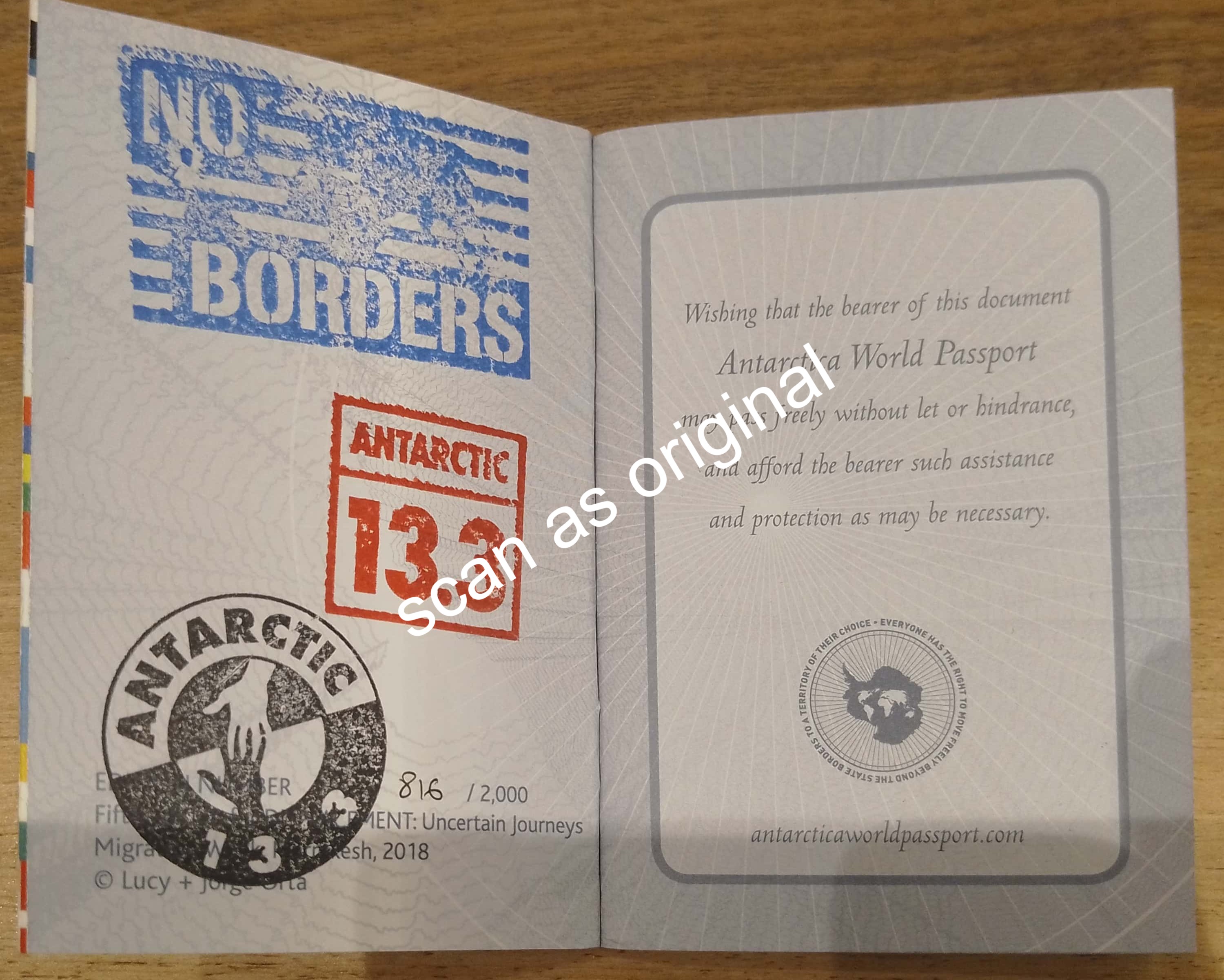

Morocco 2018, Marrakesh Office Valid Lifetime 30 years to Travel, Used in Armenia for my Company, Notarized in Armenian.
Edition DISPLACEMENT: Uncertain Journeys, SWISS Edition in Partnership with Marrakesh UNOPS 2018, Morocco.
Applied for EVISA Business but Armenia doesn't recognized the Antarctica Citizenship link with that Travel Document, so all application as Antarctica Citizen got REJECTED.
ENGLISH LANGUAGE. Certified Authentic in Wenzhou, China.
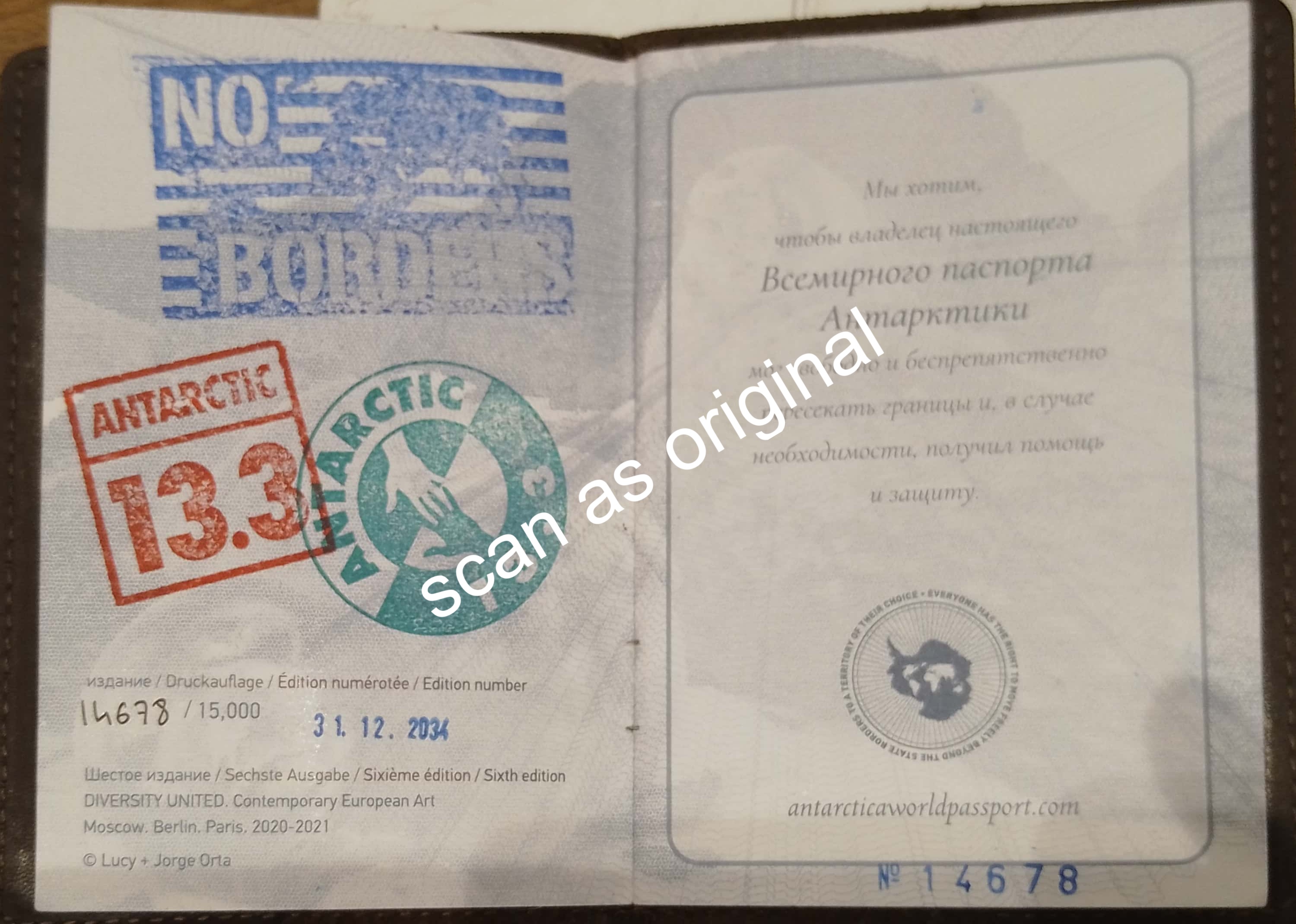
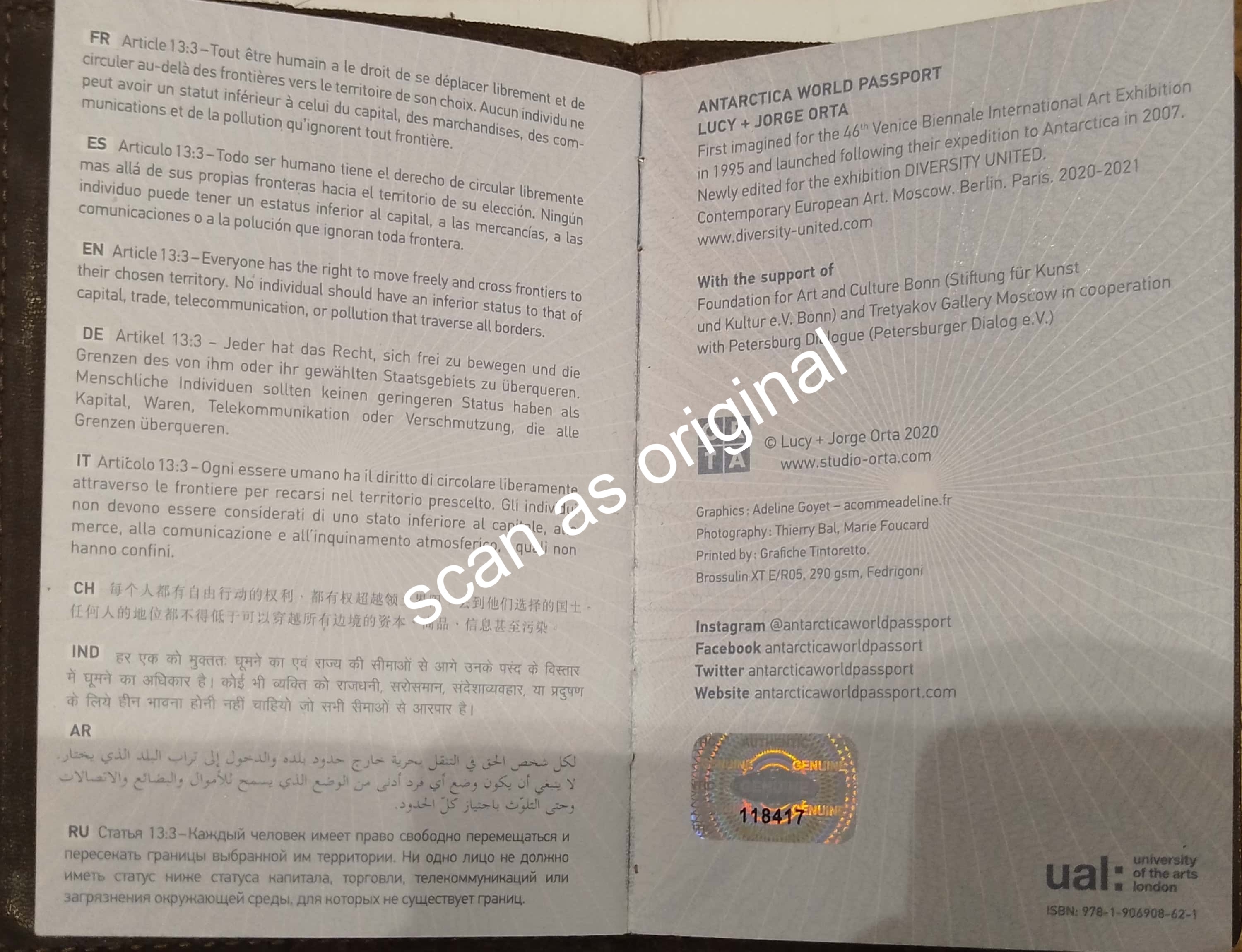
Berlin-Moscow, 2020 Limited Edition Valid Lifetime, Till 2034 To Travel with, according to : «deVENTE» Russia,
Got Stolen or Confiscated at the Border by South Caucasian Train: Crossing Georgia/Armenia (Depsite i have a Valid Visa), Ayrum by Unknown Border Guards. Kept Notarized original in Armenian and EVISA.
Given Reason: Fake Passport, Depsite i explained i had a Valid Entry Business Visa and it is only a Travel document as written.
RUSSIAN-GERMAN-ENGLISH-FRENCH LANGUAGE. Certified Authentic in Wenzhou, China.
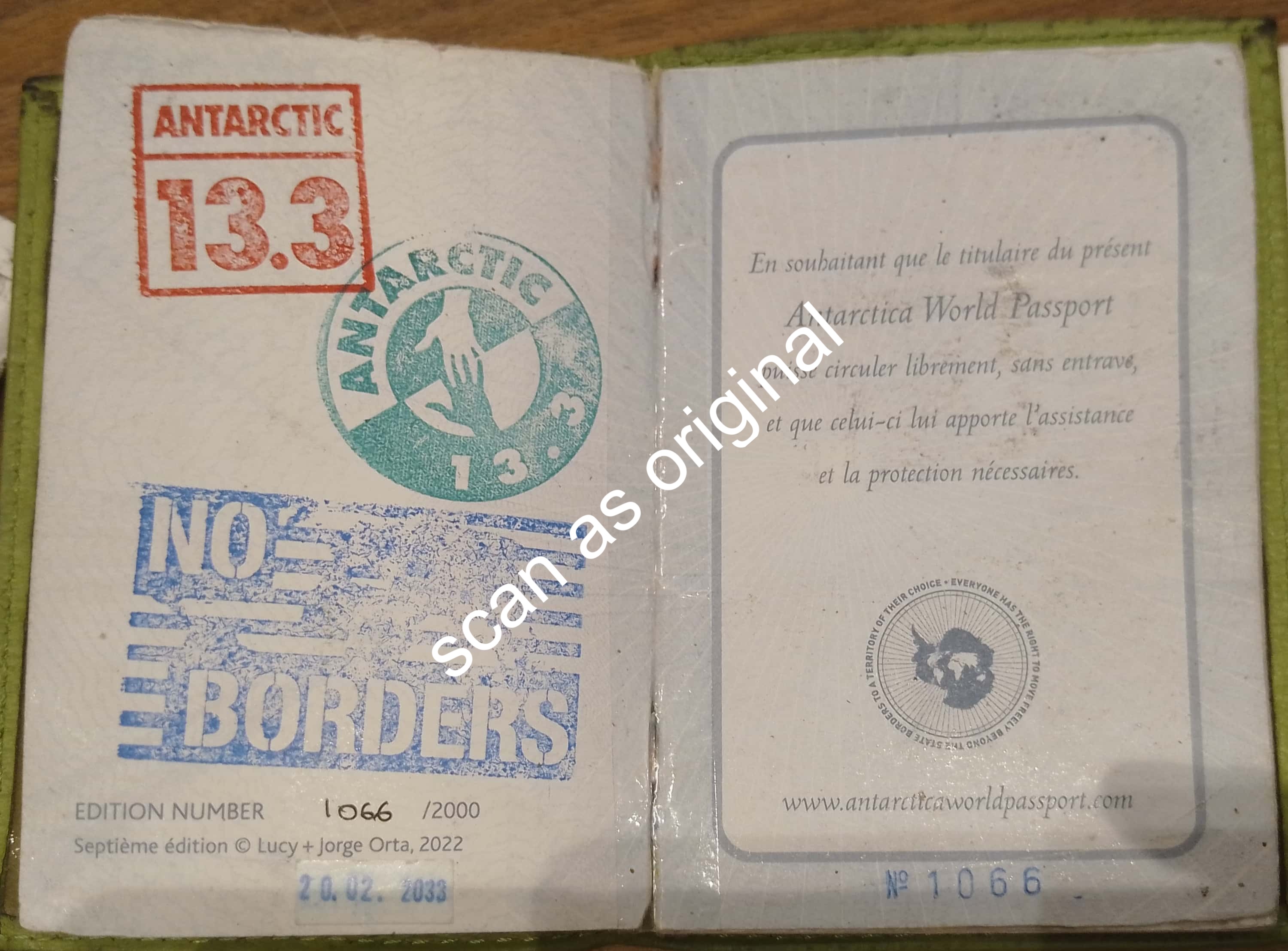
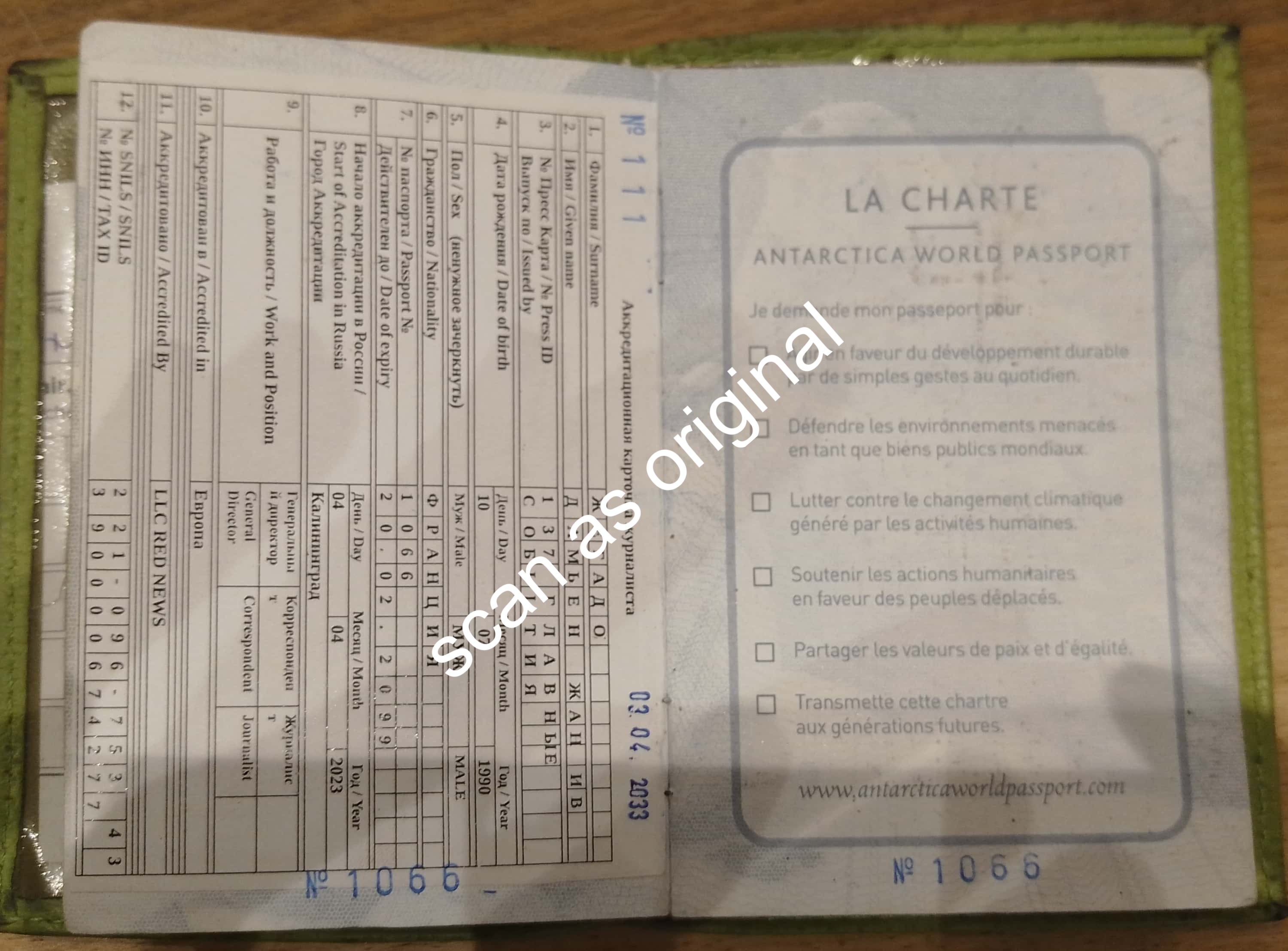
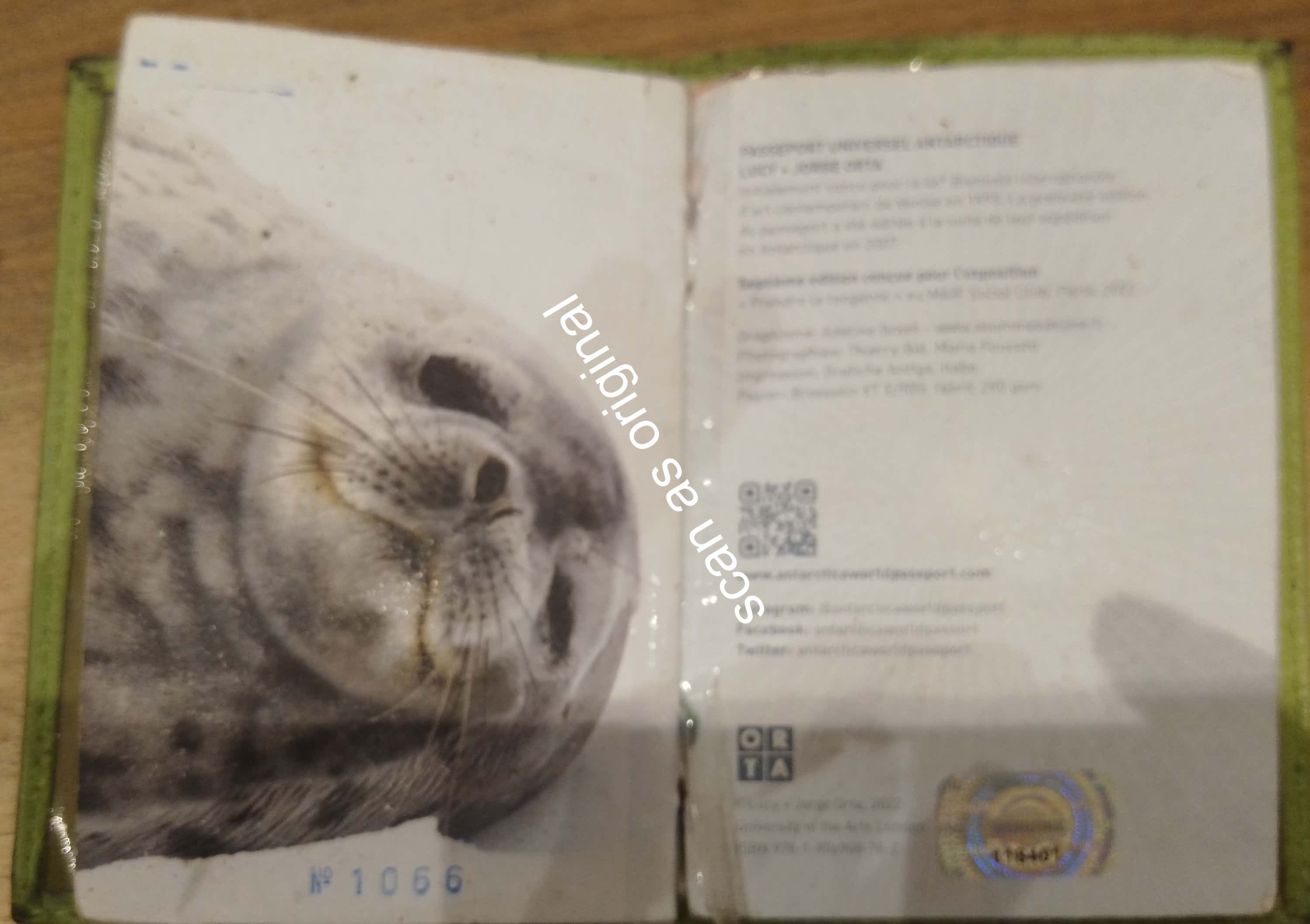
French, Paris 2022, Limited Edition Valid Lifetime, Till 2033 To Travel with According to : «deVENTE» Russia.
Used in Pension Fund in Russia and Got 2 Visas for Madagascar.
FRENCH-ENGLISH LANGUAGE. Certified Authentic in Wenzhou, China.
My Missing Childs in Ukraine
I post there a request of informations to find out where are my Childs in Ukraine, Currently i don't have any contact with their Mother and then Nobody give me any informations about their localisation and if they are in good health and their actual condition.
My Human Beings Childs are Fully registered in Poland and Ukraine, i also ordered a World Passport for them regarding i don't have their Ukrainian or French ID with me (it's with their Mother), Their World Passport is also notarized (legalized) in the Russian Federation.
The Russian Red Cross at this moment didn't help to localise my Childs in Ukraine, even that i fullfill all the requested informations, if you have any informations that can help me to enter in contact with my Childs please contact me by phone or email, This email address is being protected from spambots. You need JavaScript enabled to view it., +7921 109 27 55
Their last Known Localisation where in France at 10 rue Maurice Coeuret, 27940 Notre dame de l'isle - France, House of My Parents prior i was force to leave to Switzerland.
Their Usual residence and living place is in Kiev Svyatoshynskiy and Kiev City.
Valid Personal ID's of my Childs :
David Damienovych Jegado, ATA Passeport Serial Number 1065, UAL, «Prendre la Tangente» Edition 2021 MAIF Social Club, Paris (Lifetime Validity from 21/02/2023) ISBN 978-1-906908-78-2, University of the Arts of London
Polish PESEL Number 17292915699 (lifetime validity) , Polish Transcripted Born Act Certificate AG 0743496 (Krakow 19.02.2022), UKR Born Act 1-БК 582858
---------------------------------------------------------------------------------------------------------------------------------------------------------
Odri Demiienivna Jegado, ATA Passeport Serial Number 1061, UAL, «Prendre la Tangente» Edition 2021 MAIF Social Club, Paris (Lifetime Validity from 01/02/2023) ISBN 978-1-906908-78-2, University of the Arts of London
Polish PESEL Number 19300214705 (lifetime validity) , Polish Transcripted Born Act Certificate AG 0740627 (Krakow 19.12.2022), UKR Born Act 1-БК 688377
---------------------------------------------------------------------------------------------------------------------------------------------------------
David Damienovych Jegado Born the 29/09/2017 in a Kyiv Public Hospital (Solomianskiy District)
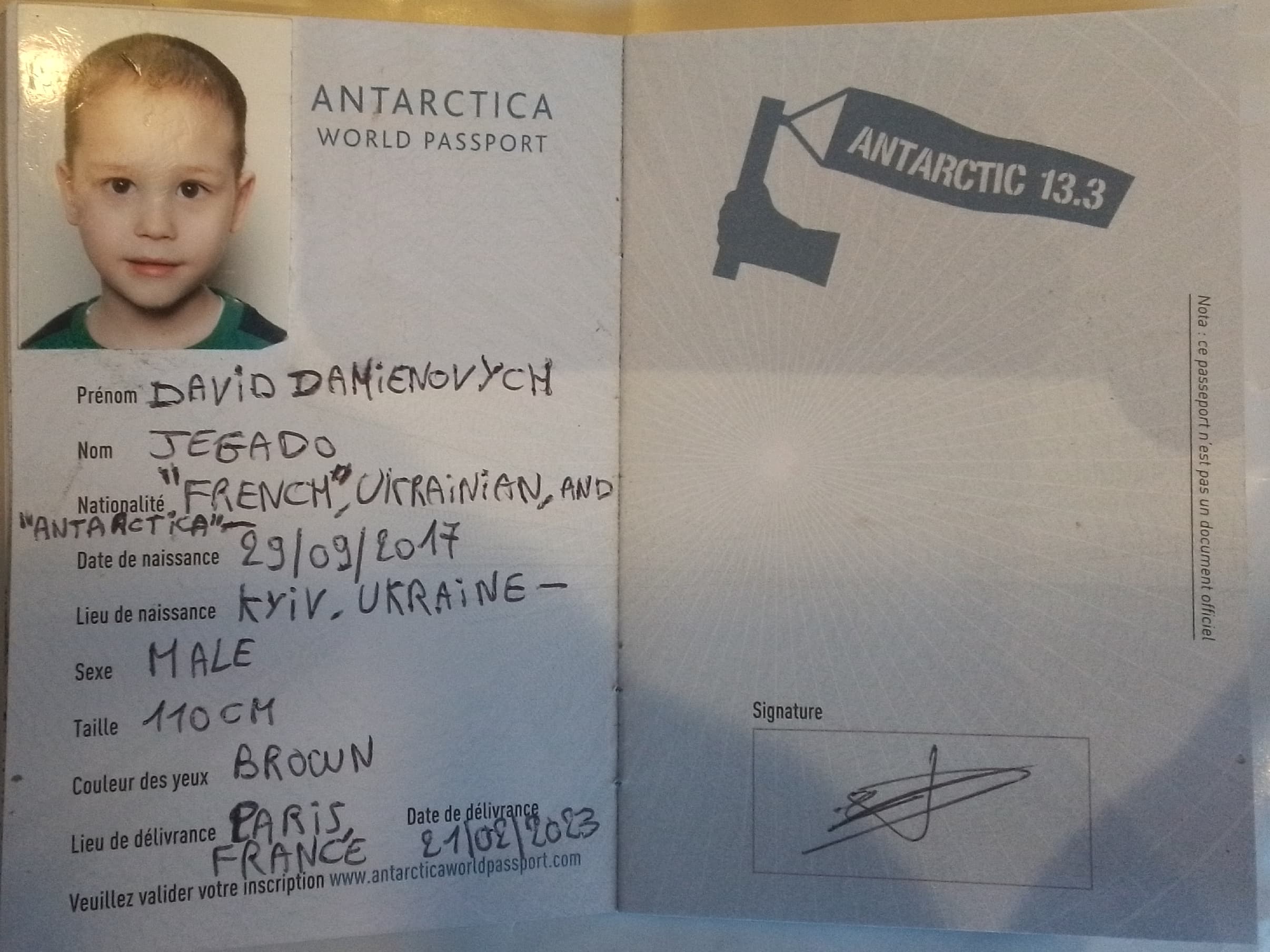
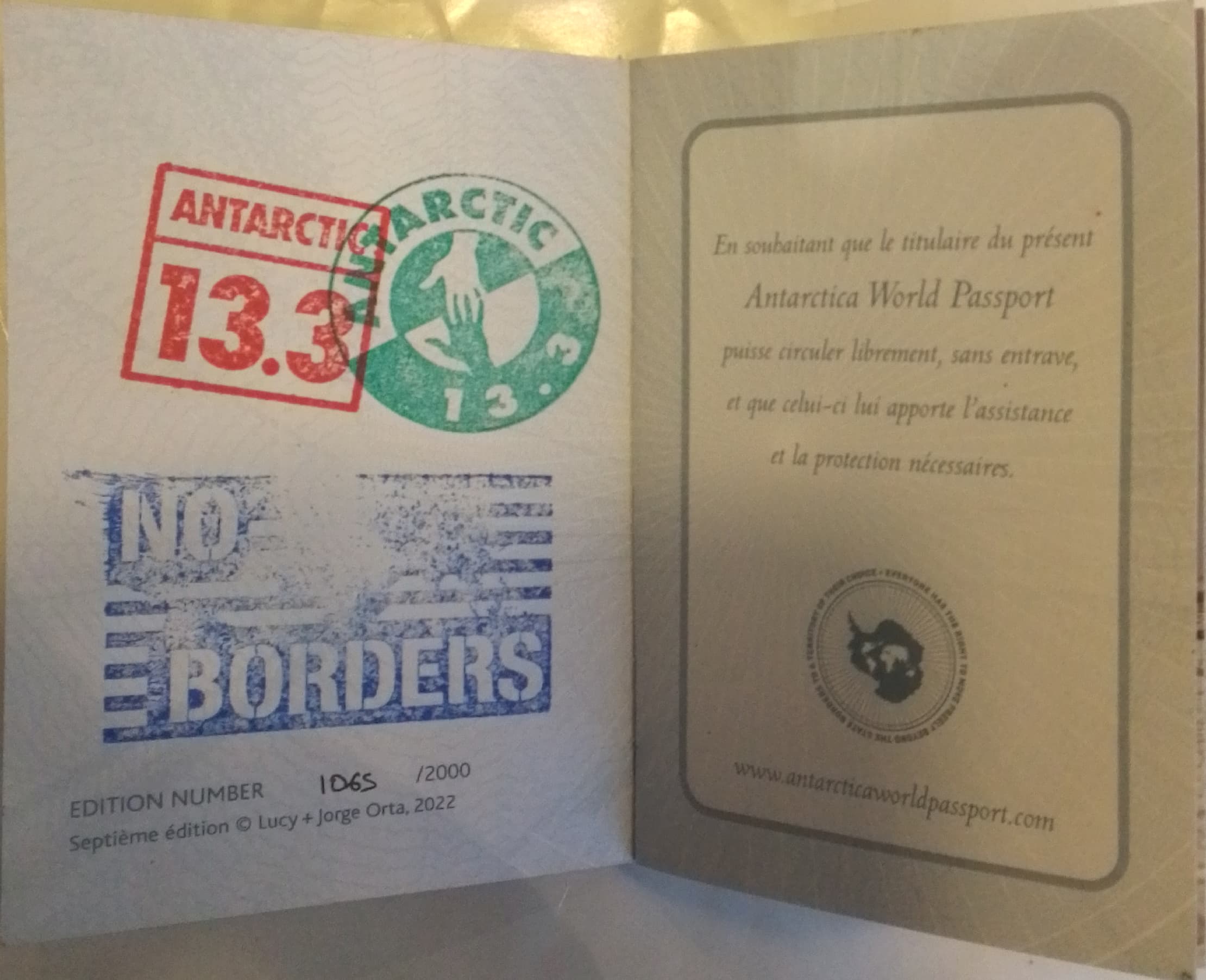
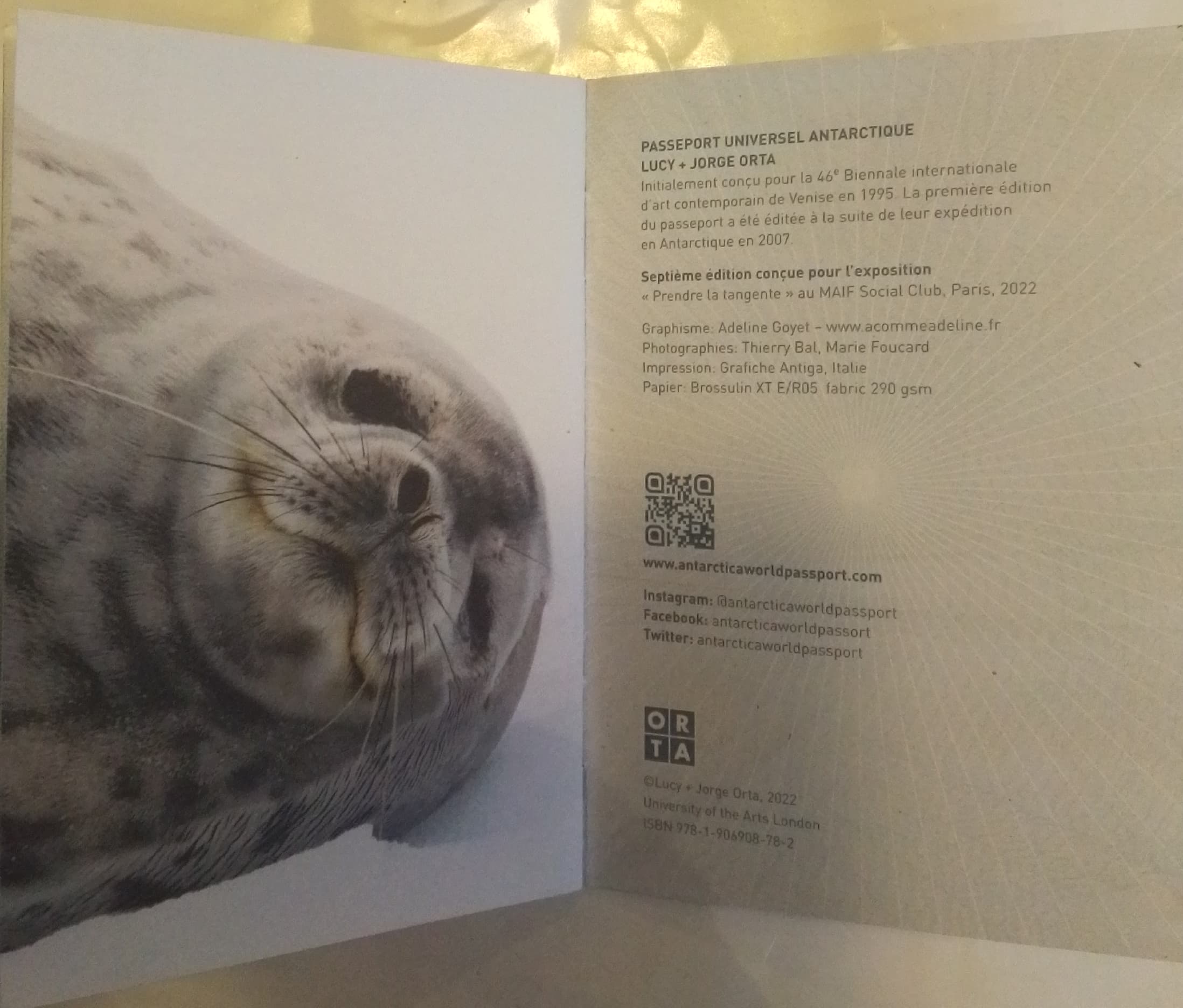
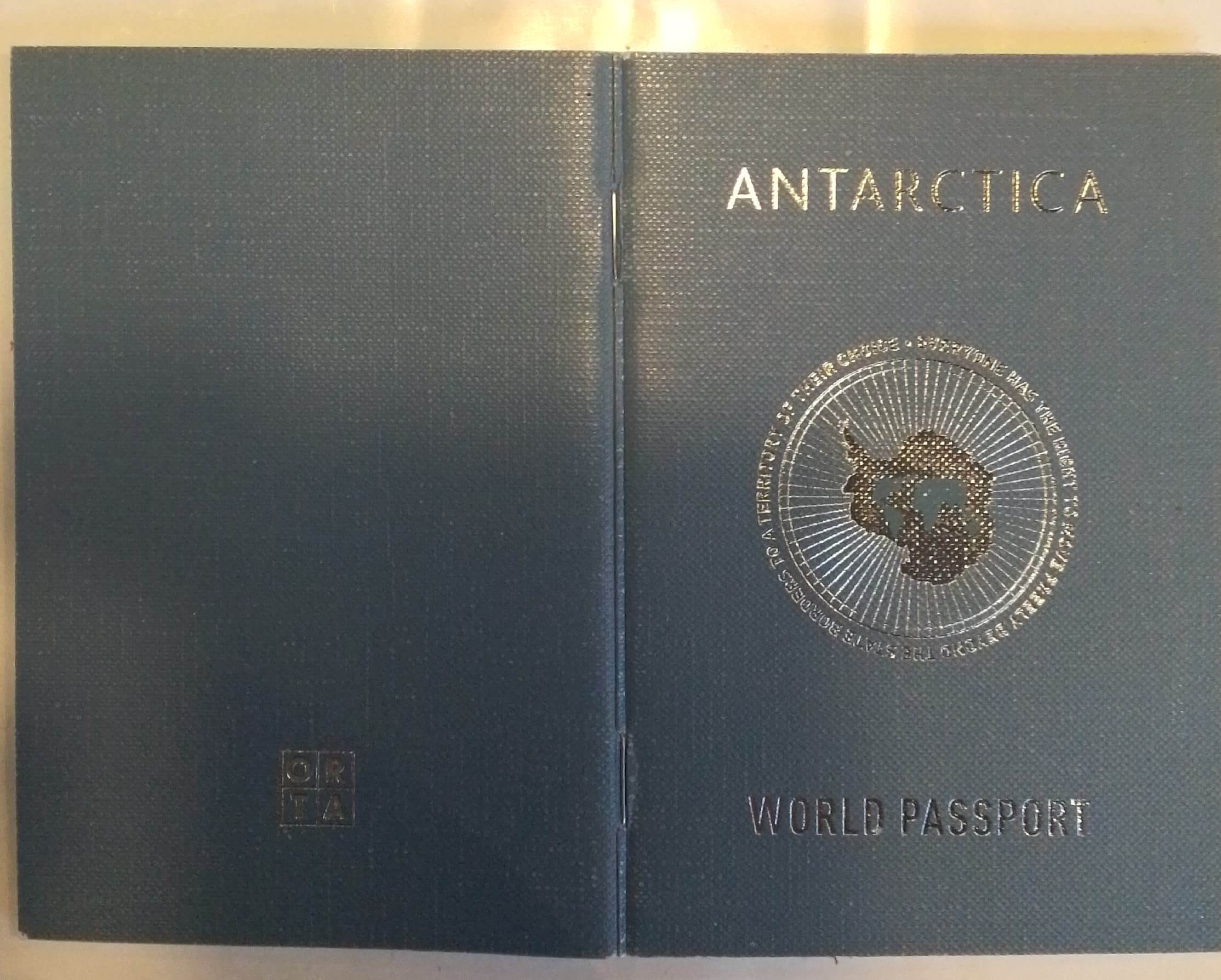
Right Click the picture to open picture in full size
---------------------------------------------------------------------------------------------------------------------------------------------------------
Odri Demiienivna Jegado Born the 02/10/2019 in a Kyiv Public Hospital (Solomianskiy District)
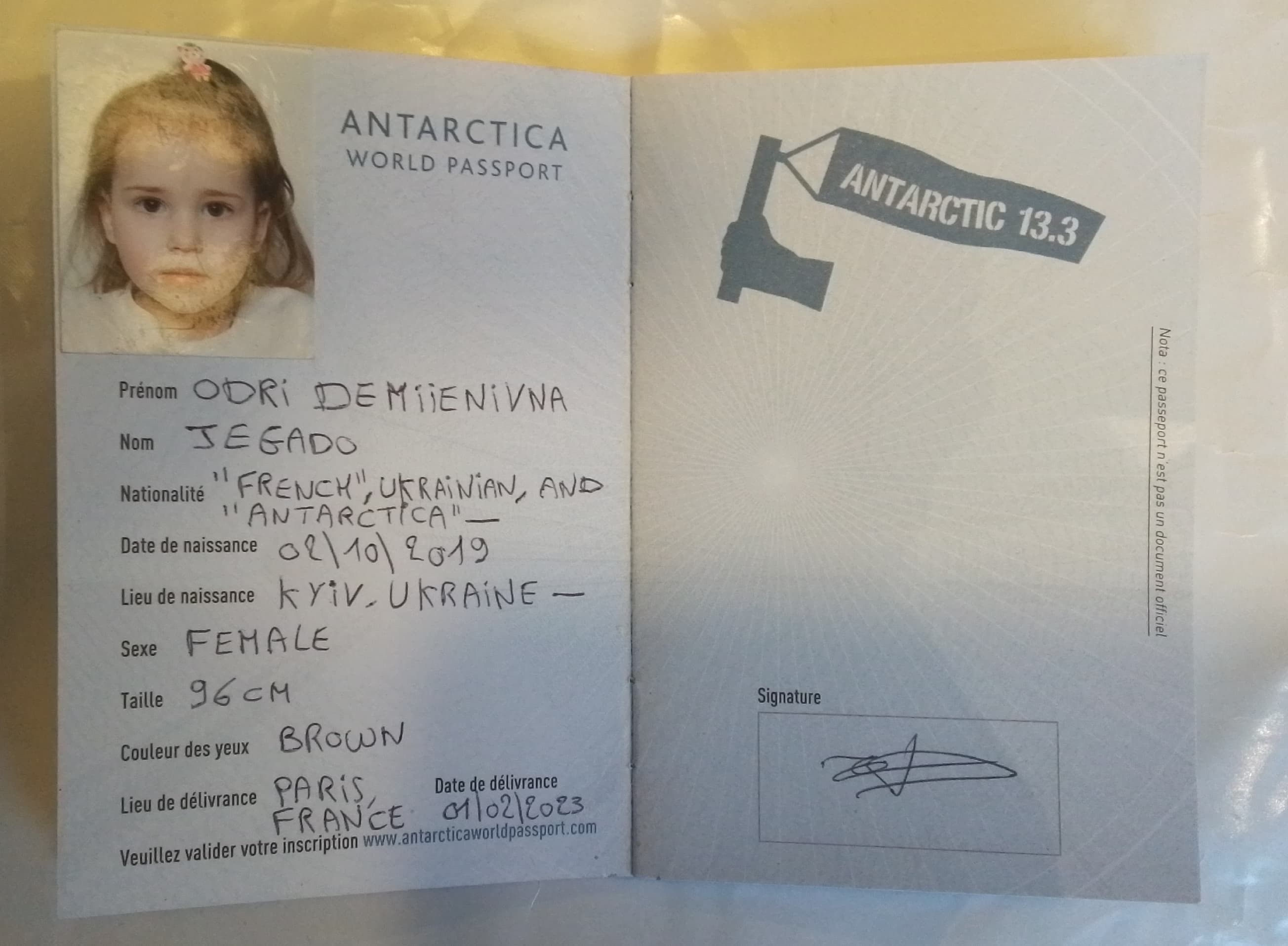
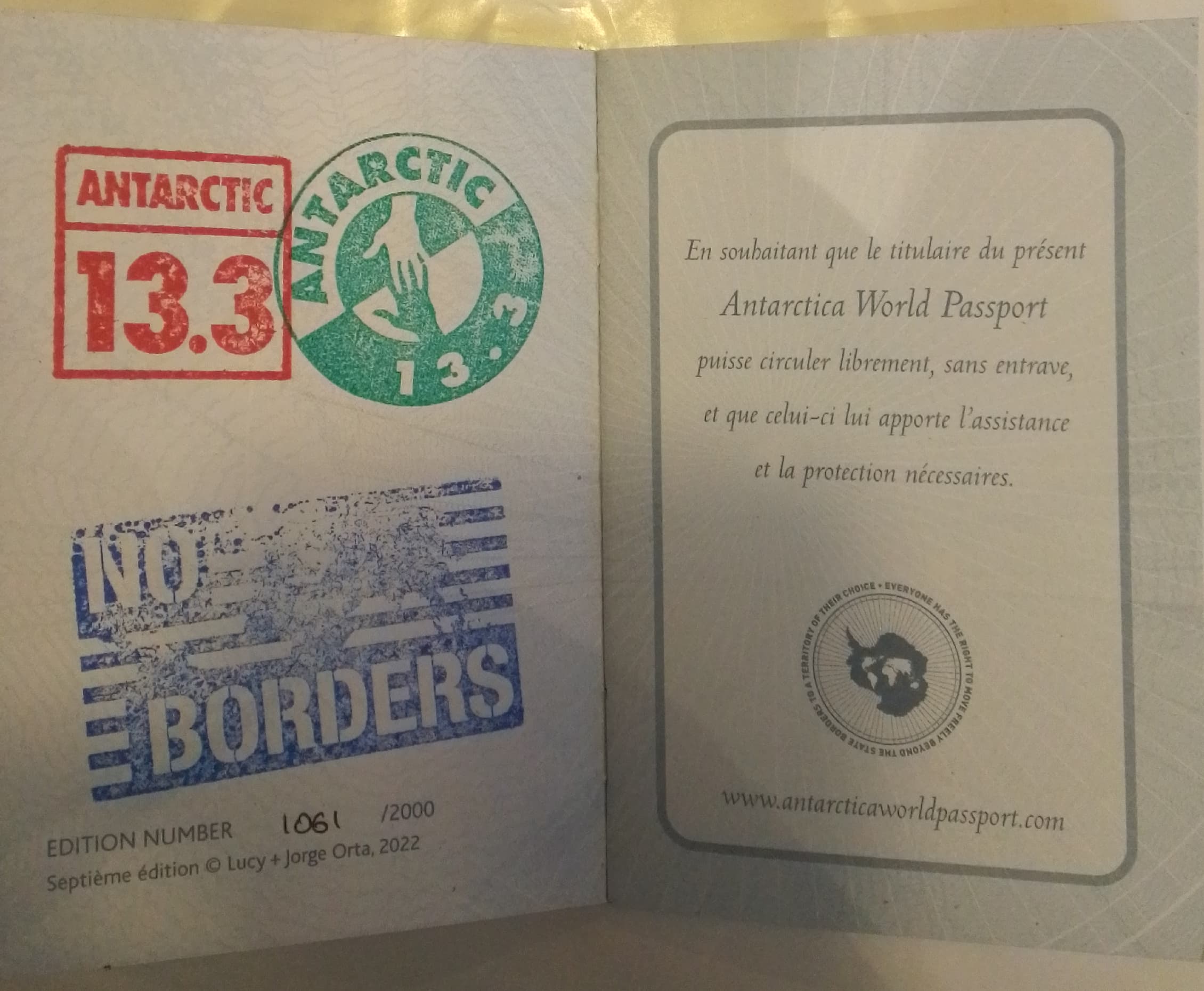


Right Click the picture to open picture in full size
---------------------------------------------------------------------------------------------------------------------------------------------------------
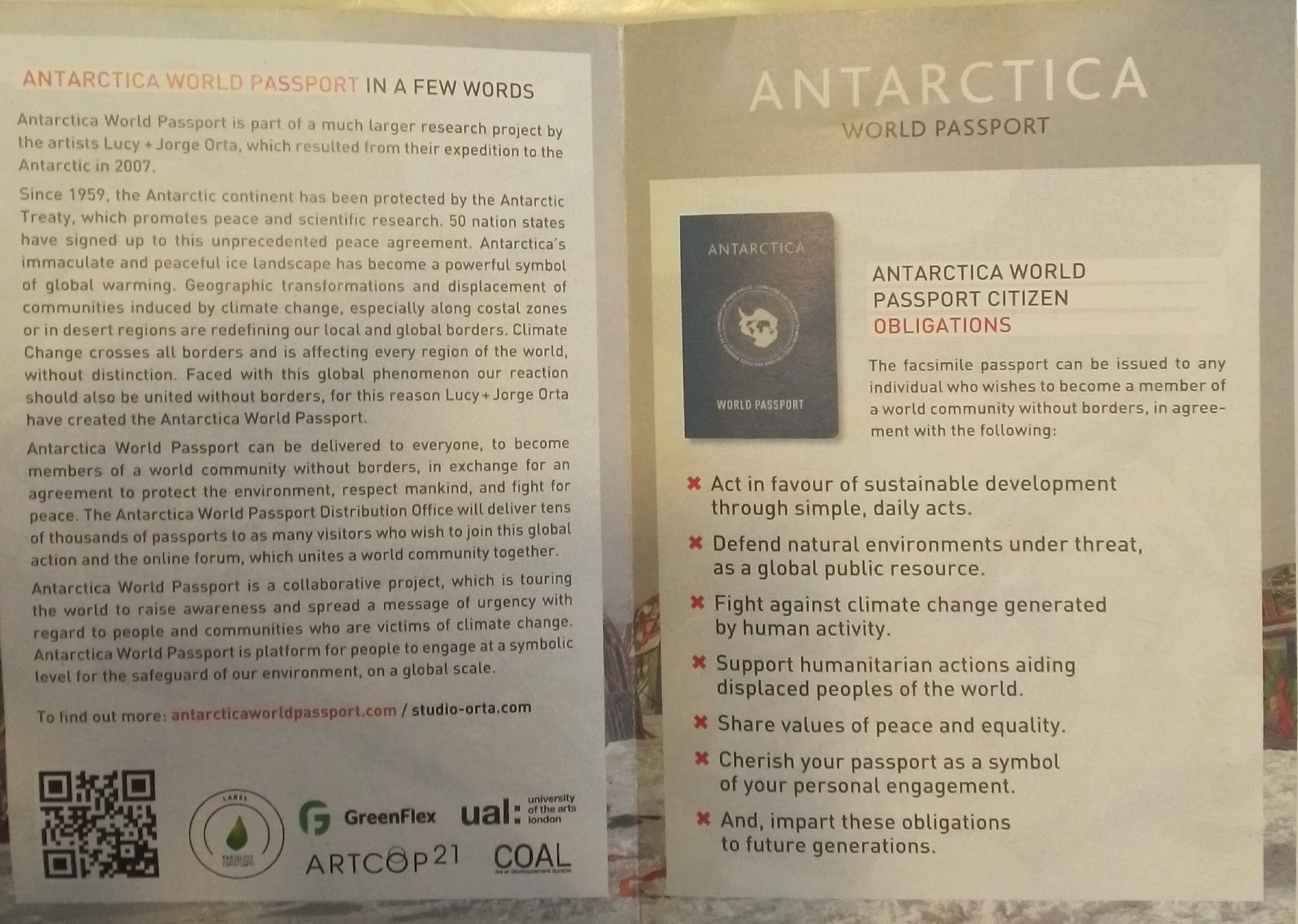
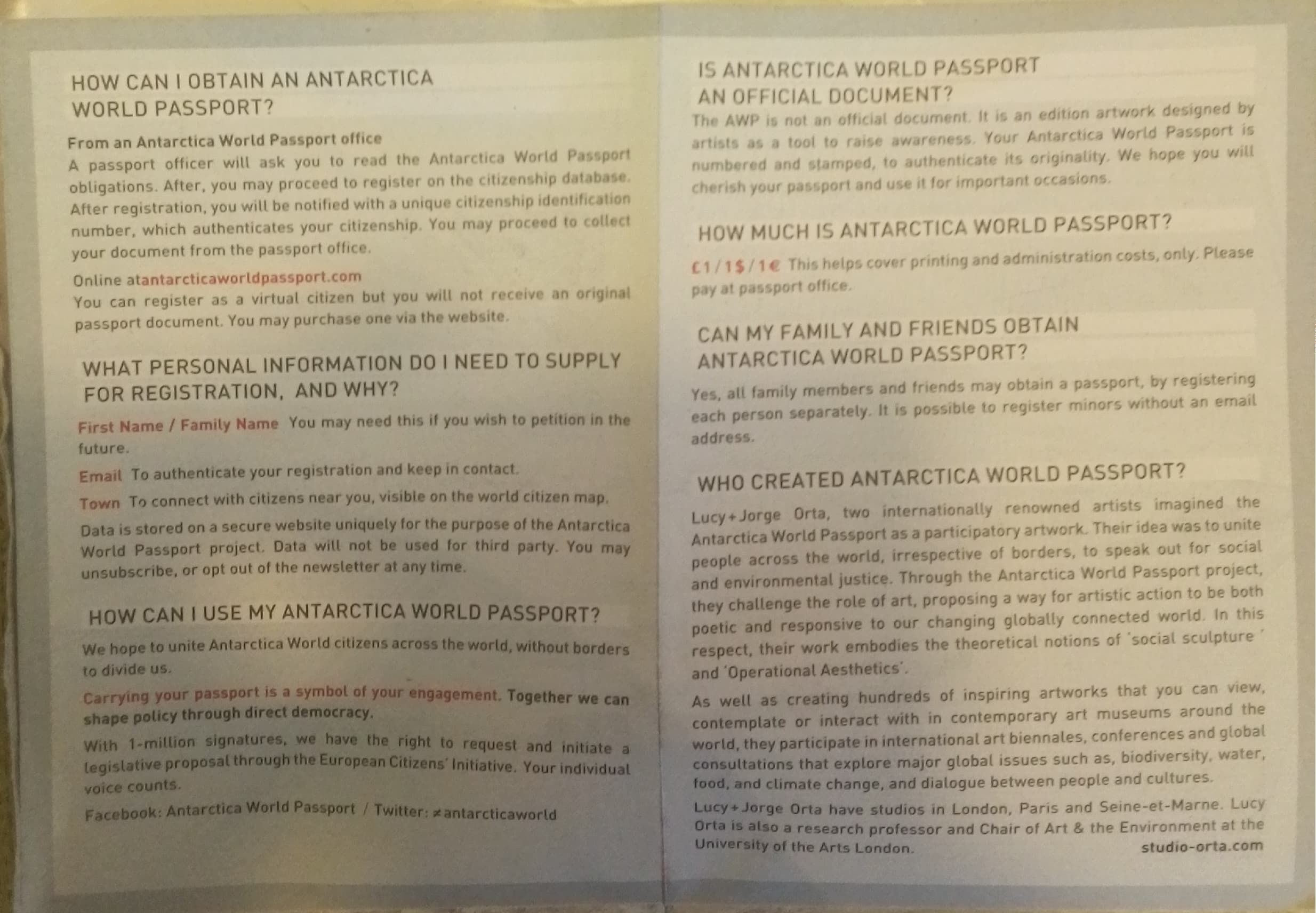
Right Click the picture to open picture in full size
